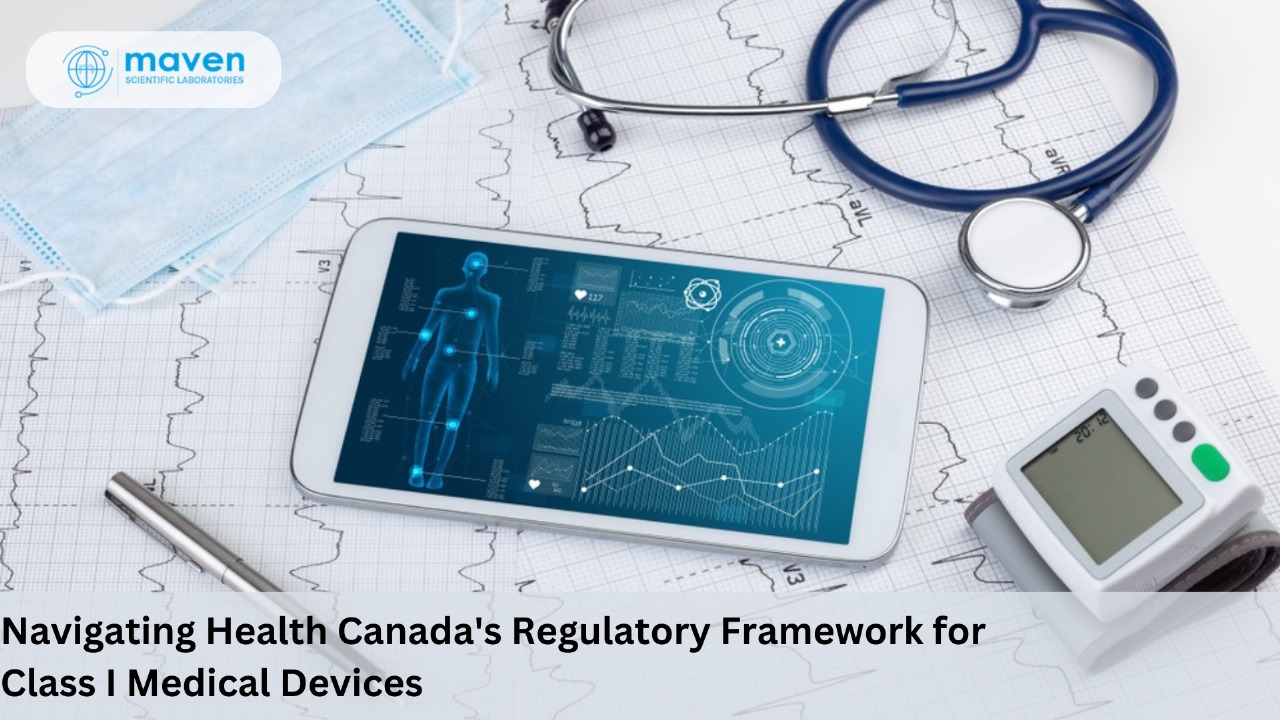
Navigating The Canadian Medical Device Market: A Comprehensive Guide To Class I Device Requirements
Entering the Canadian medical device market requires a detailed understanding of the regulatory framework that governs medical devices. Canada, recognized for its well-balanced yet stringent regulations, classifies medical devices into four categories based on their risk levels. Class I devices, which are considered the lowest risk, still require adherence to several regulatory obligations. This guide provides a comprehensive overview of the essential requirements for Class I medical devices in Canada, including key regulatory bodies, compliance processes, and best practices.
Understanding Class I Medical Devices in Canada
Class I medical devices represent the lowest risk to patients and users. Common examples include bandages, examination gloves, tongue depressors, and non-powered surgical instruments. While these devices are subject to fewer regulatory controls than higher-risk classes, it is still essential to comply with specific regulatory requirements to ensure market access.
Key Regulatory Bodies
Several organizations play a vital role in the regulation and compliance of Class I medical devices in Canada:
- Health Canada: The primary authority responsible for the safety, efficacy, and regulatory oversight of medical devices. Health Canada enforces the Medical Device Regulations (MDR) and issues the Medical Device Establishment Licence (MDEL).
- Canadian Standards Association (CSA): This organization provides standards and guidelines that help ensure the safety, performance, and reliability of medical devices.
- Canadian Agency for Drugs and Technologies in Health (CADTH): While not directly involved in the regulatory approval process, CADTH evaluates the clinical and cost-effectiveness of health technologies, including medical devices, to provide insights for decision-makers.
- International Medical Device Regulators Forum (IMDRF): Although not specific to Canada, the IMDRF helps harmonize regulatory practices across participating countries, influencing Canadian regulations through global alignment.
Key Requirements for Class I Medical Device Compliance
1. Medical Device Establishment Licensing (MDEL)
Any manufacturer, importer, or distributor of Class I medical devices must obtain an MDEL from Health Canada. The MDEL ensures that Health Canada is aware of all entities involved in the distribution chain within Canada. Manufacturers may opt to partner with a licensed importer, in which case the manufacturer can avoid paying the MDEL application fees by listing their device under the importer’s licence.
2. Quality Management System (QMS)
Although participation in the Medical Device Single Audit Program (MDSAP) is not mandatory for Class I devices, maintaining a robust QMS is strongly recommended. A QMS helps ensure the safety and effectiveness of the device, supports regulatory inspections, and aligns with industry best practices. International standards like ISO 13485 can serve as a guideline for implementing a QMS.
3. Labelling Requirements
Class I medical devices must meet specific labelling requirements as outlined in the Medical Device Regulations. Labels must include essential information such as the product name, intended use, manufacturer’s details, and any necessary warnings or precautions. Proper labelling ensures that the device can be used safely and effectively, while also meeting Canadian regulatory standards.
4. Safety and Effectiveness
Manufacturers are responsible for ensuring their devices meet all safety and effectiveness criteria through appropriate testing and documentation. Even though Class I devices are considered low risk, this process is crucial for confirming product reliability and performance before they enter the market.
5. Incident Reporting
Post-market surveillance is critical for all medical devices, including Class I devices. Manufacturers and importers must report any adverse incidents or defects involving their devices to Health Canada. This requirement is essential for maintaining public safety and ensuring that any potential risks are addressed promptly.
Registration Process for Class I Medical Devices in Canada
1. Obtain a Medical Device Establishment Licence (MDEL)
To legally market a Class I medical device in Canada, the manufacturer, importer, or distributor must apply for an MDEL from Health Canada. The application process requires detailed information about the establishment’s activities, such as manufacturing, importing, or distributing, and the types of devices involved.
2. Prepare Documentation
While the MDEL application does not require submission of extensive documentation, establishments must maintain comprehensive records that demonstrate compliance with regulatory requirements. These documents should be readily available for inspection by Health Canada if requested.
3. Submit the MDEL Application
The completed MDEL application, along with the required fee, must be submitted to Health Canada. The agency will review the application to ensure all requirements are met. Any incomplete or inaccurate information may result in delays or rejection.
4. Await Approval
Once the application has been reviewed and approved, Health Canada will issue the MDEL, authorizing the company to legally distribute the Class I medical device in the Canadian market.
5. Maintain Ongoing Compliance
After the MDEL is granted, establishments must adhere to all applicable regulations, including maintaining records, conducting post-market surveillance, and complying with labelling and incident reporting requirements. Health Canada may conduct inspections to verify continued compliance.
Monitoring and Compliance
Health Canada employs a risk-based approach to regulating medical devices, meaning Class I devices are subject to lower pre-market scrutiny compared to higher-risk categories. However, manufacturers, importers, and distributors must still fulfill post-market obligations, such as keeping detailed distribution records, reporting any adverse events, and ensuring the ongoing safety and effectiveness of their devices.
Stakeholders can use Health Canada’s public Medical Device Establishment Licence (MDEL) Listing to verify the registration status of manufacturers and other entities involved in the distribution of medical devices.
Conclusion
Successfully entering the Canadian medical device market for Class I devices requires a clear understanding of Health Canada’s regulatory framework and the associated requirements. From obtaining an MDEL to maintaining ongoing compliance, each step plays a crucial role in ensuring that medical devices meet safety and efficacy standards.
Ensure compliance with Health Canada’s regulations by obtaining your Medical Device Establishment Licence (MDEL) and adhering to all necessary post-market obligations. For expert guidance through the regulatory process, consult regulatory specialists who can assist in navigating Canada’s complex medical device market.







